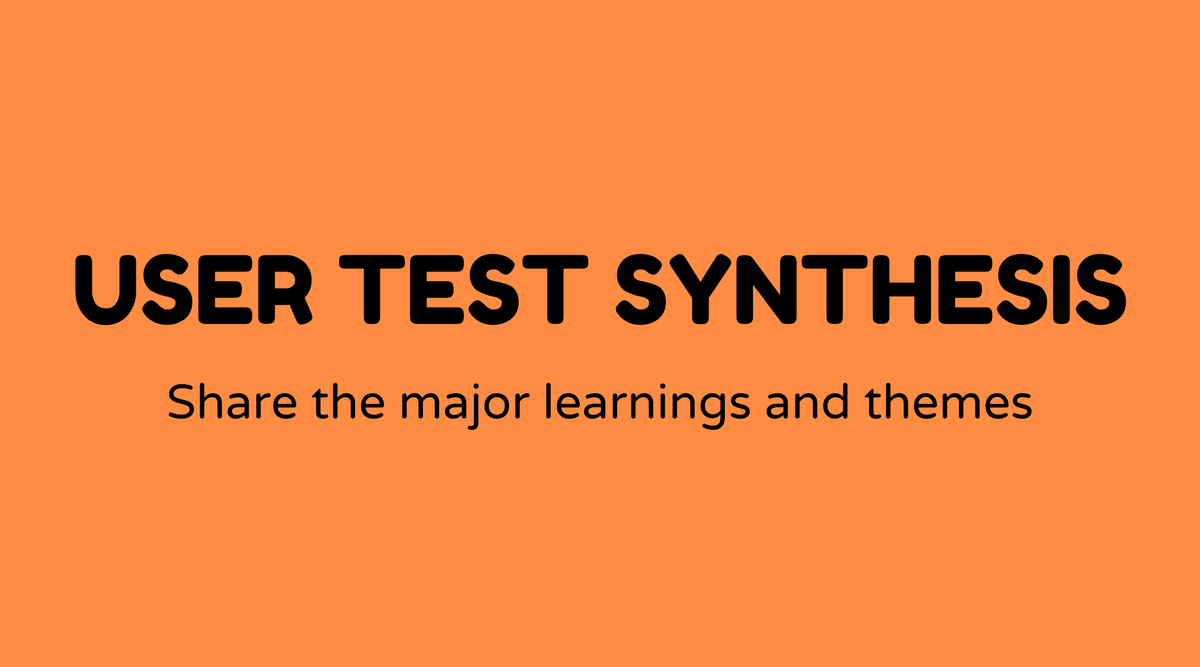User test synthesis

Overview of User Test Synthesis
User test synthesis is an essential component of the product development process where data from user testing sessions is analyzed and compiled into meaningful findings. It transforms raw data into actionable insights, helping teams understand user behavior, pinpoint issues, and prioritize enhancements. By concentrating on user test synthesis, organizations can develop user-friendly products that address real user needs.
Why User Test Synthesis Matters
User test synthesis is not merely a formality; it’s key to developing products that connect with users. When executed effectively, it highlights pain points, exposes expectations, and improves user experience. Without synthesis, data remains a chaotic collection of information, missing the chance to guide informed design decisions. In addition, synthesizing data helps connect user feedback with product development, leading to successful launches and satisfied customers.
What is User Test Synthesis
User test synthesis involves collecting, organizing, and interpreting the data gathered during user testing. It’s a systematic approach to understanding how users engage with a product. This process typically includes reviewing session notes, identifying trends, noting inconsistencies, and categorizing feedback. Synthesis converts these into clear, structured insights that can drive product enhancements.
How to Conduct User Test Synthesis
-
Gather Data: Start by collecting all data from user tests, including video recordings, notes, and surveys.
-
Review & Sort: Go through each piece of data and classify it into categories such as usability issues, feature requests, and positive feedback.
-
Identify Patterns: Look for recurring themes and behavior trends across different users.
-
Create Insights: Transform these patterns into actionable insights. Ask yourself, "What are the main pain points? What features are most favored?"
-
Prioritize Findings: Organize insights by impact and feasibility for implementation.
-
Communicate Outcomes: Share your findings with the team through presentations or reports, using visuals like charts and tables to illustrate your points.
Sample Agenda for User Test Synthesis
-
Introduction and Objectives
- Brief overview of the user testing process
- Define the goals of synthesis
-
Data Collection Review
- Recap of gathered data
- Identification of key metrics and user demographics
-
Pattern Recognition
- Discussion on recurring themes
- Mapping user behavior and expectations
-
Insight Generation
- Translating patterns into insights
- Impact assessment
-
Plan of Action
- Prioritization of recommendations
- Role assignment for implementation
-
Wrap-Up
- Summary of key findings
- Next steps and follow-up actions
Examples of User Test Synthesis
-
E-Commerce Platform: Identifying that users encounter difficulties with the checkout process, leading to cart abandonment. Synthesis guides developers to streamline this procedure.
-
Mobile App: Highlighting that users appreciate a new feature but find it hard to access. Results lead to redesigning the feature’s interface for easier navigation.
-
Educational Tool: Recognizing that the tutorial videos are overly complex; synthesis drives the creation of simplified, step-by-step guides.
FAQs
How long does user test synthesis take?
- The timeline usually depends on the complexity and volume of the data. It can range from a few days to a couple of weeks.
Who should be involved in the synthesis process?
- Typically, UX researchers, designers, and product managers work together during this stage.
What tools are utilized for user test synthesis?
- Common tools include spreadsheets, affinity mapping tools like Miro, and qualitative analysis software like NVivo.
How often should user test synthesis be conducted?
- It should take place after each major user testing session to ensure ongoing product enhancement.
Can user test synthesis benefit small businesses?
- Absolutely! Any business can gain invaluable insights and improve their product or service effectively through synthesis.
What if the data from user testing is inconsistent?
- Inconsistencies can highlight diverse user needs or expose testing issues. Further examination or additional testing may be required.



